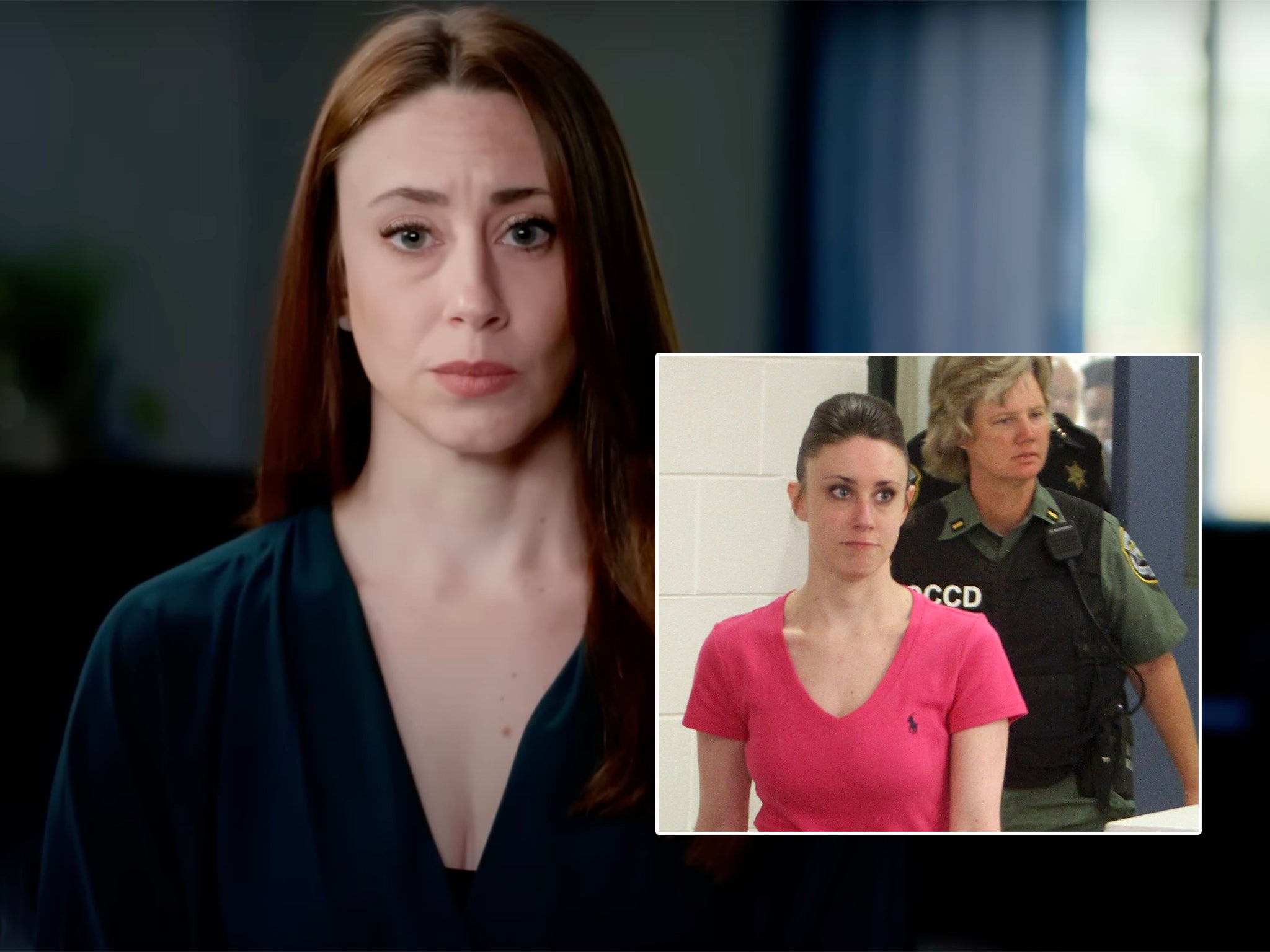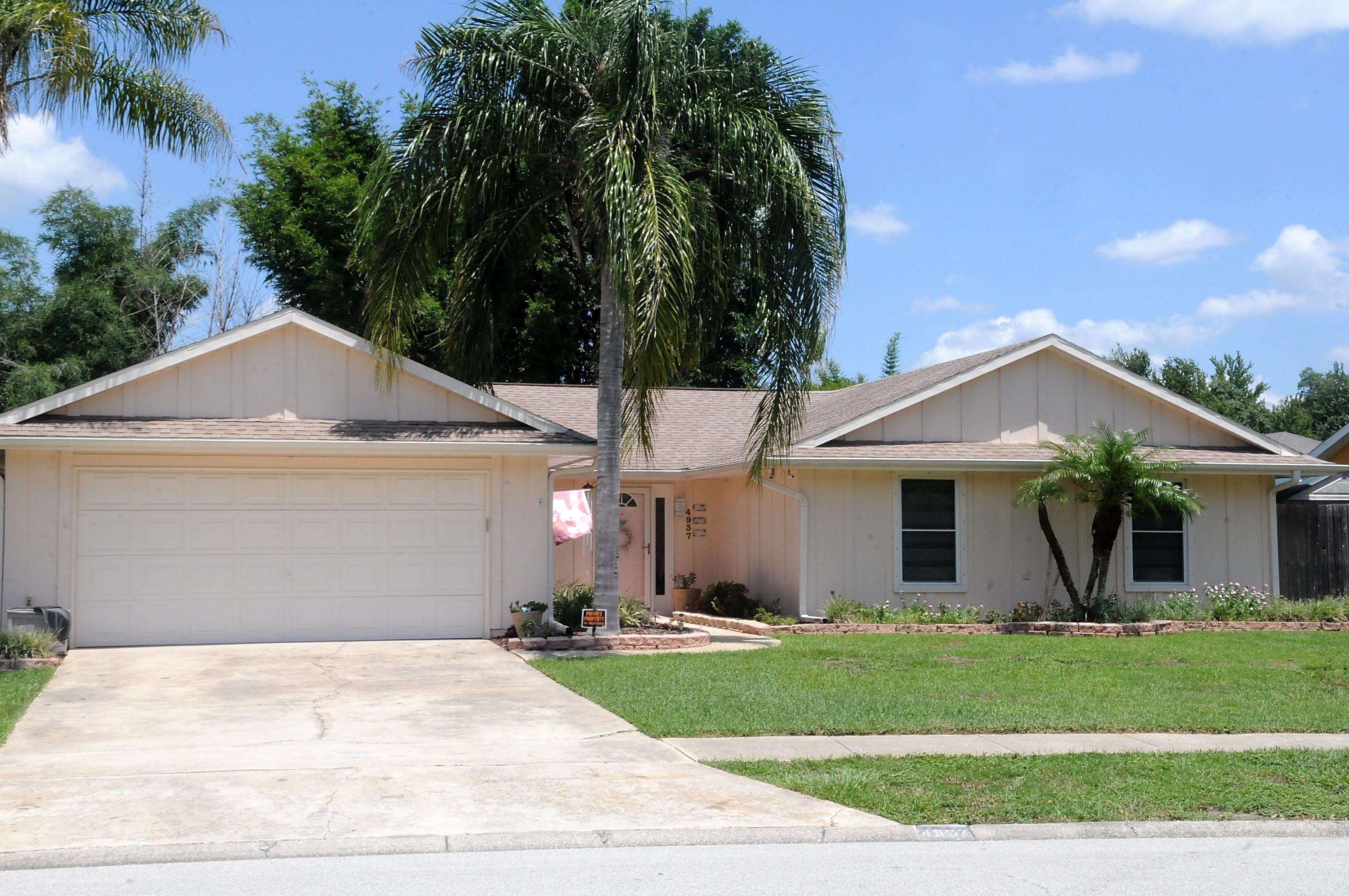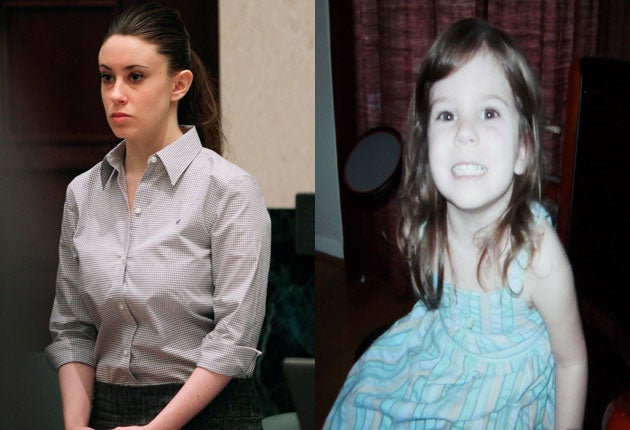Should we change our minds about Casey Anthony?
A new Peacock series features Anthony’s first on-camera interviews since she was acquitted of her daughter’s murder in 2011. Clémence Michallon reports


Your support helps us to tell the story
From reproductive rights to climate change to Big Tech, The Independent is on the ground when the story is developing. Whether it's investigating the financials of Elon Musk's pro-Trump PAC or producing our latest documentary, 'The A Word', which shines a light on the American women fighting for reproductive rights, we know how important it is to parse out the facts from the messaging.
At such a critical moment in US history, we need reporters on the ground. Your donation allows us to keep sending journalists to speak to both sides of the story.
The Independent is trusted by Americans across the entire political spectrum. And unlike many other quality news outlets, we choose not to lock Americans out of our reporting and analysis with paywalls. We believe quality journalism should be available to everyone, paid for by those who can afford it.
Your support makes all the difference.Eleven years ago, Casey Anthony was accused of her daughter’s murder. Caylee Anthony, two, had gone missing in June 2008. Casey, then 25 years old, was indicted in October of that year. Caylee’s remains were then found in December. Casey’s death penalty trial began in May 2011; a jury acquitted her after just under 11 hours of deliberations.
At the time, the verdict was met with what The New York Times described as “collective skepticism”. The case had brought the “trial of the century” format to the age of social media. It was broadcast in full, a tried and true way to turn a criminal case into a media circus. The discourse was heavy, heightened, and overwhelming. To this day, it remains hard to discuss the Casey Anthony case without also mentioning the diatribes of Nancy Grace, who filled many a minute of cable TV railing against the woman she referred to as “tot mom.”
It’s not surprising, then, that people have strong opinions on Casey Anthony’s case. Plenty have disagreed with the verdict. A smaller community has also attempted to cast a renewed eye on her trial, developing other theories as to what might have happened to Caylee. SK Patton, a nurse and follower of the case, did that in her 2018 self-published book Everything you didn’t know about the Casey Anthony Trial. In October this year, comedian Jena Friedman dedicated an episode of her AMC+ show True Crime Story: Indefensible to the case, looking at the impact of media coverage on the proceedings and their aftermath.
A new documentary, Where The Truth Lies, takes this approach to the mainstream. The three-part series is airing on Peacock this Tuesday (29 November). It contains the first on-camera interviews with Casey Anthony since the trial. The promotion was relatively brief (Peacock announced the documentary on 8 November, just three weeks prior to its release) and explosive. Peacock first unveiled a one-minute teaser in which Casey is asked why she has decided to speak now, without being given creative control. That video ended without an answer.
A follow-up trailer, released on 15 November, fleshed out the narrative, beginning with the 911 phone call placed by Casey’s mother to report Caylee’s disappearance. “I lied,” Casey – who was acquitted of murder but convicted on four counts of lying to authorities, two of which were later tossed – says at the end of the clip. “But no one asked why.”
Much of the promotion around Where The Truth Lies has revolved around Casey’s on-camera interviews, and the idea that the series marks the first time she tells her side of the story in full.
“Since her acquittal in 2011, public opinion of Casey Anthony has been largely shaped by the media convinced of her guilt,” director Alexandra Dean said in a statement released by Variety. “What emerges over the course of multiple interviews recorded over six months is a startling psychological portrait of Casey Anthony and a complete narrative of what she says happened to her daughter weighed against multiple sources of potential evidence. I believe the result will surprise many and cause the American public to look at this story in a new light.”
Reactions to the news of the documentary were quick and, for a significant part, hostile. Online, people expressed outrage at the idea that Casey Anthony might be given a platform. It didn’t help that Where The Truth Lies was announced at a heightened time for conversations around true-crime programming. (Dahmer – Monster: The Jeffrey Dahmer Story, a dramatization of the Jeffrey Dahmer case released in September by Netflix, has prompted renewed debate over the genre, its role, and its responsibilities.)
Where The Truth Lies is faithful to its premise in that it gives Casey Anthony ample time and room to share her version of her story. Throughout the six months she spent with her subject, Dean broached a variety of topics and revisited with her several locations that were key to the case, including the home where Casey lived at the time of her daughter’s death.
What you take away from the documentary will depend almost entirely on your mindset when you start watching it. In telling her version of events, Casey Anthony weaves a self-contained narrative. She points primarily in the direction of her father, George Anthony, alleging that he sexually abused her when she was a girl. Those allegations surfaced during her own trial; they are echoed and developed in the documentary.
George Anthony has always strenuously denied the allegations against him and has never faced charges. According to a disclaimer at the end of Where The Truth Lies, he declined to participate in the documentary. In 2017, reacting to an interview given by Casey Anthony to The Associated Press, her parents told People magazine: “George, who has continued to try and move forward from this tragedy and who was vindicated on multiple occasions, is once again forced to relive the hints, rumors, lies and allegations that are being made by Casey Anthony. He has specifically stated that ‘his heart hurts even more now.’”
From there, Casey Anthony insists that during the 31 days before Caylee was reported missing, she believed her daughter was alive and safe. She says this explains her actions around the time of her arrest, before Caylee’s remains were found. Her narrative is one of trauma and alleged abuse, which she says explains her other lies.
If, on the other hand, you undoubtedly believe in Casey Anthony’s guilt, then her interviews will likely do little to change your mind. In that way, the docuseries brings to mind a statement made by Casey Anthony’s defense attorney to the jury during her trial: “If you think she’s a lying, no-good sl*t, then you’ll start to look at this evidence in a different light. ... What made it unique is not what happened, but who it happened to.”

One of the most captivating participants in the documentary is not Casey Anthony herself, but one of her former acquaintances, Clint House. He arrives convinced of her guilt, telling Dean on camera: “There is absolutely nothing that Casey could ever say to anybody that is going to make me believe that she wasn’t in some way responsible [for] or involved with Caylee’s death.” Later on, after further discussion with Dean, his certainty begins to crumble. “Oh my God,” he says, doubling over with doubt, face buried in his hand. He seems stunned, the complete opposite of his confident self at the beginning of the episode.
The core of Where The Truth Lies revolves around the question of whether to agree or disagree with the verdict and is perhaps most useful in its examination of how the trial unfolded, both inside the courtroom and in the media. Jury trials are flawed and history has shown that media scrutiny rarely helps the process along – televised trials, in particular, seem especially fraught.
Where The Truth Lies challenges the prosecution’s narrative according to which Casey Anthony allegedly murdered her daughter so she could go out partying. It interrogates the way photos of Casey at various parties were used, stating that they were taken over a three-year period. We’re told Casey Anthony was never the life of the party and didn’t go out that regularly. Her post-trial life as pictured in the series appears understated: She worked as a research assistant for an investigator who worked on her case, and, aside from Where The Truth Lies, she has largely kept out of the public eye.

All these years later, it’s interesting to note that one of the most infamous legacies of the media narratives surrounding the case – the “tot mom” nickname – was born, according to Nancy Grace herself, mainly out of convenience and circumstance, rather than any real meaning.
“When I was in law school, I would often give cases that I would have to memorize hundreds and hundreds, sometimes thousands, of pages of legal documents for class, and it was easier for me to remember a case by the content of the case, not the name,” Grace told Bill O’Reilly. “So I would name each case by the content. In this case, I needed content that would fit at the bottom of the screen so our viewer would know what we were talking about, and ‘Tot Mom’ fit. It was nothing personal.”
Where The Truth Lies invites its viewers to reconsider, if not what they think, why they think it. It makes for painful, heavy viewing – not the cynical exercise some were bracing for, but at times a genuinely psychologically challenging experience.
Where The Truth Lies is streaming now on Peacock.


